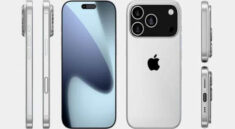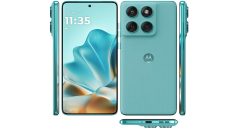Tech by Android – Google Innovation Introduces Android XR Smart Glasses, Android Evolution in the Gemini Era
The tech world continues to evolve with groundbreaking innovations from Google. This time, Google introduces the Android XR Smart Glasses, signaling a bold step into the extended reality (XR) landscape. As we enter the Gemini era, the fusion of AI with mobile platforms has created space for a new wearable experience that enhances both digital and physical realities.
According to Tech by Android, these smart glasses represent the next level in Android innovation. They are designed to integrate virtual environments with real-world views, using Gemini-powered AI for an immersive and intelligent user experience.
“Read more : Motorola Edge 60 FUSION with the World’s Most Immersive 1.5K Four-Sided Curved Display“
The Rise of Android XR Smart Glasses
Android XR Smart Glasses are not just another wearable device. They symbolize a shift in how users will interact with technology. Equipped with advanced sensors, voice control, and augmented reality (AR) capabilities, these glasses allow real-time translation, live navigation overlays, and instant contextual search.
Users can walk down the street while receiving useful on-screen information—restaurant reviews, transit directions, and product details. Techbyandroid.com reports that the Gemini AI helps these glasses respond to voice prompts intelligently, acting as a seamless assistant.
Key Features That Define the Android XR Smart Glasses
1. Gemini AI Integration
The integration of Gemini AI makes these smart glasses smarter. They adapt to user preferences and provide proactive support. For instance, if a user is in a foreign country, the glasses can automatically offer real-time translation and cultural tips.
2. Seamless Augmented Reality
Google’s new device supports dynamic overlays in the user’s field of vision. When someone points at a building, the glasses can show its history or current occupancy. This feature supports tourists, students, and professionals in their daily routines.
3. Privacy and Safety
Despite the immersive features, privacy remains a top priority. The glasses have a physical indicator light that alerts others when the camera is active. Facial recognition is disabled by default to prevent misuse.
4. Lightweight and Stylish
Unlike previous attempts in the smart glasses market, Android XR Smart Glasses offer comfort. They are lightweight, visually appealing, and available in various frame styles. Google has clearly learned from past wearable feedback.
A Leap Forward in the Android Ecosystem
These smart glasses are not just about vision enhancement. They are an essential piece of the evolving Android ecosystem. Google envisions a future where Android XR Smart Glasses work in harmony with other Android devices, from smartphones to smart homes.
By connecting to Android phones, users can transfer notifications, access media, and control devices. Gemini helps predict the next step—such as opening the garage door when the user approaches home.
As reported by techbyandroid.com, Google developers are also working on an open SDK for third-party app developers. This will allow them to create tailored XR experiences for health, education, retail, and more.
The Role of Gemini in the Future of Android
Gemini is not just an AI tool—it is an ecosystem enabler. It allows Android XR Smart Glasses to become personalized tools. With natural language understanding, Gemini can understand contextual queries like, “What’s this building?” or “How do I get to the train station?” and deliver relevant answers on screen.
The XR Smart Glasses also support Gemini Live features, such as live transcription and AI summary of meetings. Imagine attending a seminar and getting a real-time summary with key takeaways, directly in your field of vision.
“Read more : Facts about the Dangers of Exposure to 5G Network Radiation from Cell Phones“
Target Audiences and Use Cases
These smart glasses will benefit various user groups:
- Professionals: Use them for live meeting notes, navigation to client sites, or quick product research.
- Students: Access educational overlays and real-time translations in classrooms or museums.
- Travelers: Navigate foreign cities with language translation and cultural guidance.
- Retailers: Use XR features to visualize product setups or offer in-store customer assistance.
Each use case reflects the growing demand for more intuitive, hands-free technology.
Challenges and Future Development
While Google has made impressive progress, challenges remain. Battery life, public acceptance, and data protection laws need continuous attention. Developers must find the right balance between functionality and user comfort.
However, with constant updates and AI training, these smart glasses could become mainstream within the next few years. Tech enthusiasts anticipate more XR devices to follow, especially as the Gemini era evolves.
Final Thoughts
Google’s release of Android XR Smart Glasses redefines mobile interaction. It’s not just a gadget—it’s the start of an immersive digital revolution. With Gemini as its core intelligence, this device combines style, utility, and futuristic technology into a wearable experience.
Stay updated with Tech by Android and techbyandroid.com as we continue to witness the transformation of Android into a more responsive, intelligent, and immersive ecosystem.



